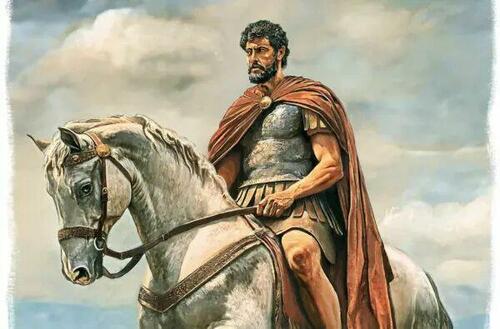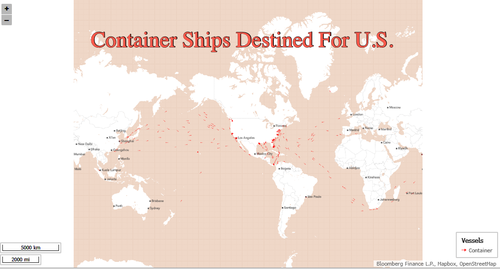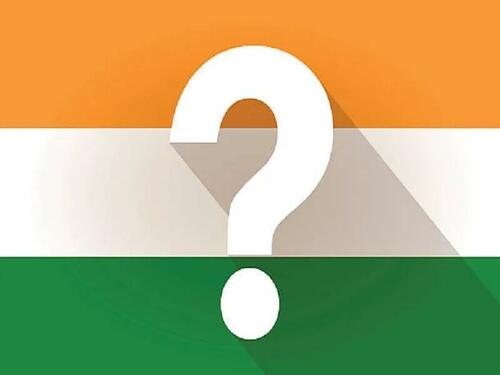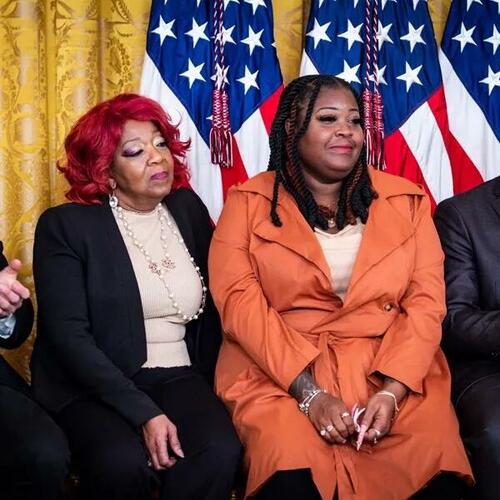The New Battle For The Americas: Why The Western Hemisphere Is Becoming A Global Flashpoint
Authored by Nick Giambruno via InternationalMan.com,
Below is a geopolitical map of the Western Hemisphere as I see it today.

The principal geopolitical foes of the US in the Western Hemisphere—Cuba, Venezuela, and Nicaragua—are firmly in the China and Russia camp.
Other countries can shift depending on the outcome of recent elections.
Here’s an overview of some of the most geopolitically important countries in the Western Hemisphere to help frame the broader picture.
Venezuela
A military confrontation over Venezuela appears increasingly likely.
Since Hugo Chávez’s rise to power in 1999, Caracas has aligned itself with Russia and China. Venezuela’s vast oil and gold reserves make it a geopolitical prize. The country holds the world’s largest proven oil reserves—over 303 billion barrels, around 17 % of the global total—concentrated in the Orinoco Belt. That’s more oil than Saudi Arabia’s reported reserves.
For China and Russia, Venezuela represents a geopolitical foothold in America’s backyard—much like how the US uses Taiwan and Ukraine to do the same to Beijing and Moscow.
Trump’s renewed “war on drugs” is a thinly veiled pretext for the US to advance its geopolitical interests in the Americas.
Further, earlier this year, Washington labeled Venezuela’s Tren de Aragua and the Cartel de los Soles as “foreign terrorist organizations,” a dramatic escalation without precedent. The designations paved the way for military and covert actions under counterterrorism authorities.
The US has amassed an impressive naval force off Venezuela’s coast in what Trump described as a campaign against “narco-terrorism.”
In reality, this looks more like classic gunboat diplomacy—the drugs-and-terrorism narrative is merely a thin patina of propaganda used to justify the policy. Venezuela is not a major cocaine producer, nor does it play any significant role in fentanyl trafficking.
Venezuela now stands at the crossroads of a changing world order. It’s difficult to imagine the US securing its sphere of influence in the Western Hemisphere while Venezuela remains in its current geopolitical orientation—promoting an ideology that Latin America should be independent of the US.
Guyana
Guyana has quietly become one of the most geopolitically significant states in the Western Hemisphere. Its oil boom, its vulnerability to a long-running territorial dispute with Venezuela, and its growing alignment with the US situate it at the forefront of the conflict over control of the Western Hemisphere.
Washington’s recent deepening of economic and security ties signals recognition of that shift. Meanwhile, Caracas’s legislative and military moves to assert control over Guyana’s Essequibo region reflect a bold challenge—not just to Guyana, but to the US’s hemispheric influence.
Cuba
Cuba may look small on a map, but its position—just 90 miles from Florida—makes it one of the most strategically important pieces on the hemispheric chessboard.
In a world where geography still defines power, Cuba’s proximity to the US and its historic defiance of Washington give it an outsized geopolitical weight.
As the US refocuses on consolidating influence in the Western Hemisphere, Cuba is a challenge.
For Washington, the island’s alignment with China and Russia complicates efforts to assert control over the region.
For Beijing and Moscow, Cuba offers a rare foothold in America’s own backyard—a place to project soft power, intelligence, and potentially even military influence, without crossing direct red lines.
Economically, Cuba’s partnerships with China and Russia help it survive under US sanctions. Beijing has become Cuba’s largest trading partner and a major investor in telecommunications, ports, and infrastructure. Moscow, meanwhile, has pledged more than $1 billion in economic cooperation and continues to strengthen energy and defense ties. These relationships allow Havana to maintain political autonomy and serve as a symbolic anchor for anti-US sentiment across Latin America.
In short, Cuba is more than a relic of Cold War geopolitics—it’s a live variable in today’s multipolar order.
Cuba is also a stark reminder of the limits of the US government’s power. Since 1959, Washington has unleashed covert operations, economic embargoes, and numerous attempts to topple the Cuban regime—and yet it remains.
What new move could the US now deploy that it hasn’t already tried?
Short of a full-scale military invasion—which would itself offer no guarantee of success—I don’t see any viable alternative.
That means the Cuban government is likely to maintain its current geopolitical orientation and continue serving as a thorn in the side of US ambitions in the Western Hemisphere.
Colombia
Colombia has long been one of Washington’s most reliable allies in Latin America. Hugo Chávez famously—and derisively—referred to it as “the Israel of South America.”
That pattern has shifted under the country’s current left-wing president, Gustavo Petro. Earlier this year, he traveled to China and signed a cooperation plan marking Colombia’s formal accession to the Belt and Road Initiative—a move that rattled Washington. In response, Trump announced the suspension of US aid and threatened tariffs against Colombia, accusing Petro’s government of failing to curb narcotics.
The key question now is whether Colombia’s pivot toward Beijing marks a lasting strategic realignment or simply a temporary detour under Petro’s leadership. The direction Colombia ultimately takes will carry major geopolitical implications for the Americas—especially given its position bordering both Venezuela and Panama.
Nicaragua
Nicaragua has firmly aligned itself with China and Russia, positioning the Ortega government as one of Washington’s most outspoken adversaries in the Western Hemisphere.
Economically, Nicaragua has embraced China as a partner in infrastructure and investment, offering Beijing a strategic toehold in Central America. The Ortega administration has actively courted Chinese financing for energy, telecommunications, and port projects—moves that fit neatly into Beijing’s broader Belt and Road ambitions. Relations with the US, by contrast, have deteriorated sharply amid sanctions, trade restrictions, and public criticism of Ortega.
Brazil
Brazil, Latin America’s largest country by size and population, finds itself at a pivotal juncture in the hemisphere’s evolving geopolitical map.
Under former president Jair Bolsonaro, Brazil aligned closely with the US—sharing trade policies and strategic cooperation. That posture shifted with the return of Lula da Silva, who has pushed Brazil toward stronger ties with China.
Tensions with the US erupted recently when Trump imposed a sweeping 50% tariff on Brazilian exports, citing Brazil’s prosecution of Bolsonaro and what Washington called unfair trade practices. Brazil responded by filing a complaint at the World Trade Organization, invoking its new Reciprocity Law and hinting at retaliatory tariffs of its own. The result: a major rift with the US and a clear signal that Brazil is recalibrating its strategic orientation.
Brazil’s direction matters enormously. A lasting US-Brazil split could realign trade flows, shift regional power dynamics, and boost China’s influence in Latin America. Conversely, if Brazil ultimately steers back toward Washington, it would reaffirm the US’s dominant position in the hemisphere.
Panama
Panama has emerged as a crucial flashpoint in the contest for influence across the Western Hemisphere.
With the Panama Canal at the center of global trade and US naval strategy, the Trump administration views any Chinese foothold near the waterway as intolerable.
Earlier this year, Secretary of State Marco Rubio visited Panama and delivered a blunt message: reduce Chinese influence around the canal or face consequences. Within days, Panama announced it would not renew its memorandum with China’s Belt and Road Initiative—a move widely seen as a victory for US pressure.
The backdrop is unmistakable: Trump himself has publicly questioned the sovereignty of the canal, suggesting the US might ”take it back.”
The strategic intent is clear—Panama must align with the United States rather than Beijing. The canal is too vital for Washington to treat as neutral.
Washington’s recent hard line evokes echoes of 1989, when US military forces invaded Panama to remove Manuel Noriega and install a friendly regime.
Mexico
Mexico sits squarely at the heart of the Americas both geographically and economically. As the US’s largest trading partner, Mexico has deep economic, manufacturing, and logistical links with Washington—from cross-border supply chains to shared infrastructure.
At the same time, Mexico engages with China economically. Chinese goods and investment are flowing into Mexico at a growing pace, sometimes causing friction with the US, which worries that Mexico could become a backdoor for Chinese influence or trade. Mexico’s leadership also shows signs of asserting greater independence, pursuing its own path on global diplomacy and trade policy rather than fully falling in line with Washington.
Further, Mexico faces new pressure from Washington to treat its drug cartels as terrorist threats. The Trump administration has declared major Mexican criminal groups as foreign terrorist organizations and is laying plans for military operations inside Mexico’s borders.
For Mexico’s leadership, this presents a serious challenge. Mexico firmly asserts that no foreign military operations may take place on its soil without authorization, and sees unilateral US action as a breach of national sovereignty.
Mexico could become a pivot point where US geopolitical strategy collides with Latin American autonomy.
El Salvador
El Salvador is an interesting example of the geopolitical tug-of-war between China and the US in Latin America.
A defining moment came when Washington paid roughly $6 million to El Salvador to detain hundreds of deportees—mainly Venezuelans—in the country’s maximum-security prison. Shortly after, the US hosted President Bukele at the White House, praising his government’s hard-line approach to gangs, migration control, and internal security.
At the same time, Bukele has deepened ties with China. Beijing has financed major Salvadoran infrastructure projects, including the new national library, a modern stadium, and an expansive waterfront tourism corridor.
So far, Bukele has managed to balance relationships with both Washington and Beijing. Whether that balance can hold remains to be seen, but for now, El Salvador stands as one of the few countries effectively navigating both sides of the great-power rivalry.
Argentina
Under Javier Milei, Argentina has become a key partner for the US in South America.
That’s why the US has made an unusually large and openly political bet on Argentina. Treasury Secretary Scott Bessent and President Trump previously announced a $20 billion currency swap that allows the US Treasury to buy Argentine pesos and deliver dollars to help stabilize Argentina’s financial system. They also outlined plans to assemble another $20 billion from US banks and private funds, bringing total potential support to around $40 billion.
Trump described the deal as an “economic Monroe Doctrine,” making clear that this is not simply an economic program but a geopolitical play. He tied the continuation of US support directly to President Javier Milei’s political success.
The US interest in Argentina is not hard to understand. Argentina is the third-largest economy in Latin America, with a GDP of about $600 billion. It is a major exporter of agricultural products and holds some of the world’s largest shale gas reserves. It also possesses huge lithium deposits. These resources are strategically valuable in a world where supply chains for food, energy, and critical minerals are becoming more important amid rising tensions with Russia and China.
What makes Argentina stand out is its political direction. While many large Latin American economies maintain closer ties to China or are leaning toward the BRICS bloc, Argentina under Milei has taken the opposite path. Milei withdrew from the BRICS expansion plan, canceled or froze Chinese infrastructure agreements, scaled back the use of China’s currency swap lines, opened the strategic Paraná River region to US military cooperation, and began signing new mineral agreements with US partners. For Washington, reducing Chinese influence in Argentina and securing access to critical resources are major incentives behind the financial support.
For Argentina, the US swap line is meant to stabilize the peso and support Milei’s market-friendly reforms. But the political conditionality creates risk. If reforms stall or if Milei loses legislative momentum, the US may pull back, which could quickly destabilize the currency again.
In the most recent national elections, Milei’s party made significant gains, winning roughly 41% of the vote and increasing its congressional representation enough to strengthen its ability to block opposition measures. Markets interpreted this as a sign that US backing will continue for now and that reform efforts will remain in place.
The bigger picture is that Washington is using financial leverage to secure influence in a strategically important, resource-rich country.
When Geopolitics Shifts, Financial Reality Follows
The great-power struggle unfolding across the Western Hemisphere isn’t just a regional contest—it’s a sign of the deeper economic fractures now spreading through the global system.
As the US, China, and Russia compete for influence in Latin America, the financial foundations that once underpinned American global dominance are weakening under the weight of inflation, debt, and an overstretched monetary order.
Geopolitical realignment is accelerating a financial reckoning that will affect every saver and investor long before it reshapes national borders.
To understand how this hemispheric tug-of-war connects directly to what may be the most dangerous economic crisis in a century—and to learn the three essential strategies you need right now to protect yourself—I strongly recommend reading my free PDF special report, The Most Dangerous Economic Crisis in 100 Years: The Top 3 Strategies You Need Right Now. Click here to access it now.
Tyler Durden
Fri, 12/26/2025 - 18:30
 Click on graph for larger image.
Click on graph for larger image.


 A man sits on the edge of Areopagus hill opposite the ancient Acropolis hill in Athens on November 21, 2025. Aggelos NAKKAS/AFP via Getty Images
A man sits on the edge of Areopagus hill opposite the ancient Acropolis hill in Athens on November 21, 2025. Aggelos NAKKAS/AFP via Getty Images Statue of Socrates at the Academy of Sciences, Humanities and Fine Arts in Athens on January 11, 2023. Photo by Martin Bertrand/Hans Lucas/AFP via Getty Images
Statue of Socrates at the Academy of Sciences, Humanities and Fine Arts in Athens on January 11, 2023. Photo by Martin Bertrand/Hans Lucas/AFP via Getty Images Roman emperor Marcus Aurelius (121–180) is known for his “Meditations.” Biba Kayewich
Roman emperor Marcus Aurelius (121–180) is known for his “Meditations.” Biba Kayewich Volunteers serve food during the "Turkey and Blessing" dinner at Lindale Church in Houston on Nov. 25, 2025. Ronaldo Schemidt/AFP via Getty Images
Volunteers serve food during the "Turkey and Blessing" dinner at Lindale Church in Houston on Nov. 25, 2025. Ronaldo Schemidt/AFP via Getty Images



 The U.S. flag and a judge's gavel, in this illustration taken on Aug. 6, 2024. Reuters/Dado Ruvic/Illustration
The U.S. flag and a judge's gavel, in this illustration taken on Aug. 6, 2024. Reuters/Dado Ruvic/Illustration

 Lobbying spending by major food companies and their trade associations has reached record highs this year. | AP Photo/Patrick Sison
Lobbying spending by major food companies and their trade associations has reached record highs this year. | AP Photo/Patrick Sison














Recent comments